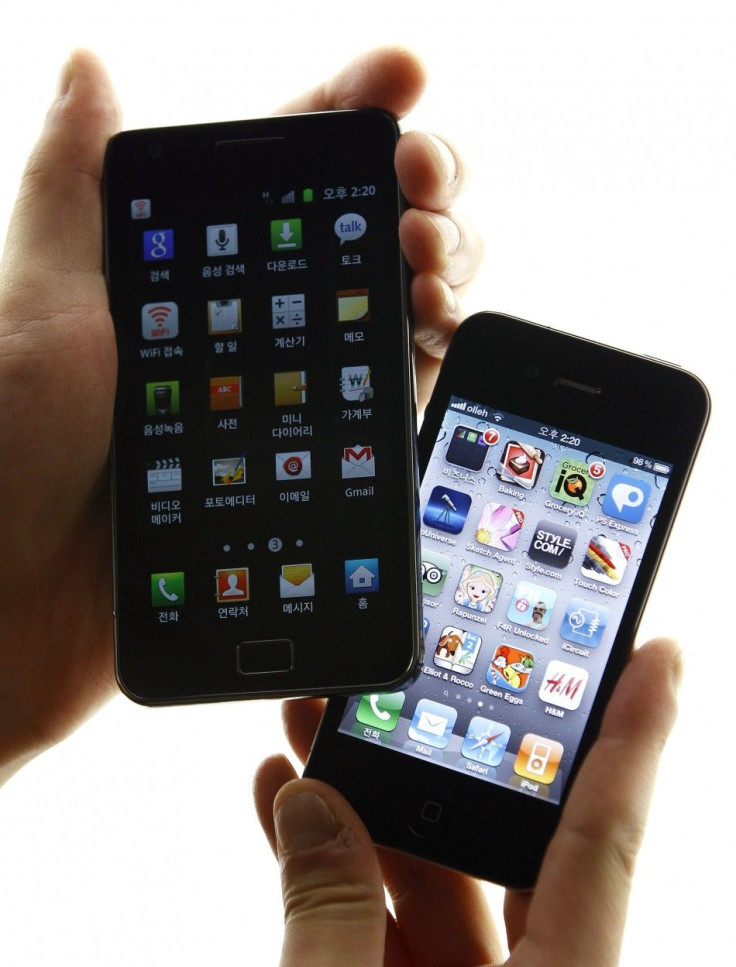iPhone 4S Dominates Flickr: Are Apple Cameras 'Re-inventing' Photography?

Just over a month after its release by Apple, the iPhone 4S has become the second most popular camera phone on image-sharing web site Flickr, behind only the iPhone 4.
Flickr's Camera Finder provides data on the most popular cameras used to post photos, and the site has been tracking the Apple smartphone's rise for weeks. Although Apple products like the iPhone 3, iPhone 4 and iPhone 3GS have all been and continue to be popular choices, the graphs usually fluctuates, constantly changing which camera is at the top.
Rise of iPhone 4S
The steady rise of the Apple iPhone 4S then, seems to indicate that its camera is truly something special.
The iPhone 4 still has a hefty lead on the iPhone 4S, but even this may change in the coming weeks. The iPhone 4S model made some significant improvements to its smartphone brethren. It boasts an 8-megapixel backside illumination sensor, a five-element lens, and a significantly larger aperture (the hole in the camera through which light travels).
If these improvements weren't enough, Apple's iPhone 4S also has some tricks up its sleeve that many smartphones, and most iPhones, lack. The camera has a hybrid infrared filter to stop the smartphone from overheating, built-in face detection, excellent color accuracy, and reduced motion blur, meaning the iPhone 4S can stop the streaking that sometimes occurs when the camera is moved during shooting.
Smartphone Data Missing
Before Apple lovers begin praising the obvious superiority of their iPhones to other models, Flickr did have one piece of grounding news to offer: many smartphones don't actually embed device information into downloaded photos the way Apple iPhones do. This means that many more smartphones, like the fourth-ranking HTC EVO 4G or the missing Samsung Galaxy Nexus, could be vastly underrepresented in the final statistics. Nonetheless, the iPhone 4S's rise shows many on Flickr are increasingly enamored with the new smartphone's camera.
Apple Smartphones Reinvent Photography
Beyond the data provided for camera phones on Flickr, the Apple iPhone 4 is also the most popular camera on the image-sharing site overall, beating out powerhouses like Nikon and Canon. The race is closer here, but the iPhone 4 continues to rise, and Flickr continues to be a hub for up-and-coming photographers.
The iPhone 4S meanwhile, is an even sleeker and more sophisticated version of the iPhone 4, and has garnered praise from some of photography's legends. Annie Leibowitz praised the iPhone 4S camera to The Telegraph on Nov. 21, calling it the snapshot camera of today.
Going beyond the camera-smartphone divide, Leibovitz even told MSNBC on Rock Center that she would recommend the Apple product to anyone asking for advice on what camera they should purchase.
Professional photographer and gallery owner Ryan Bolger goes even further. In a post on TiPb, Bolger confessed that he had been holding out on getting an iPhone for years, waiting for a smartphone that would satisfy him as a photographer. The iPhone 4S is that camera.
The iPhone 4s has changed my creative life in a very big way, Bolger gushed. I've even used it on some paid client assignments. That's how much I trust it as a professional photographer.
I just read an article last night, Bolger finished, that photography was one of the things Steve Jobs aimed to re-invent. As a guy whose life revolves around photography and has since childhood, you’ve already done this, Sir. So thank you Steve Jobs, and thank you Apple.
Traditional Cameras In Trouble?
The general rise of smartphone cameras on Flickr meanwhile, especially the iPhone models, also indicates that another group may be in trouble besides Sony or HTC: traditional cameras themselves. With all the praise being lavished on the iPhone 4S, and with such a strong backing by both Flickr users and professional photographers worldwide, it would seem the Apple smartphone may end up not only toppling other iPhones and their rivals in popularity, but may succeed in replacing traditional point-and-shoot cameras as well.
There is, of course, something quite potent to be said for the heft and mechanical beauty of a Nokia or Canon camera. Having one slung around one's neck feels so much more impressive than whipping out a smartphone and aiming it at one's target. Digital cameras meanwhile, continue to grow in popularity and to improve in speed and quality.
Apple's iPhones however, are improving faster. In a modern world with ever-greater emphasis on speed and convenience, the iPhone 4S may well come to challenge traditional cameras, and the smartphones that come after it may end up eliminating the competition altogether.
In the meantime, even Apple convert Bolger and iPhone enthusiast Liebovitz are sticking with their point-and-shoot models, using the iPhone 4S as a way to expand and complement their work rather than encompass it.
For Bolger meanwhile, even a progress of iPhone advancement that threatens traditional cameras may be less important than the work both machines allow human beings to complete.
The ability to capture, ratify, and share my creative life with a few simple taps has helped me in my quest to make the world a better place through my art, Bolger said. Many Flickr users, and Apple lovers, would agree.
© Copyright IBTimes 2025. All rights reserved.





















